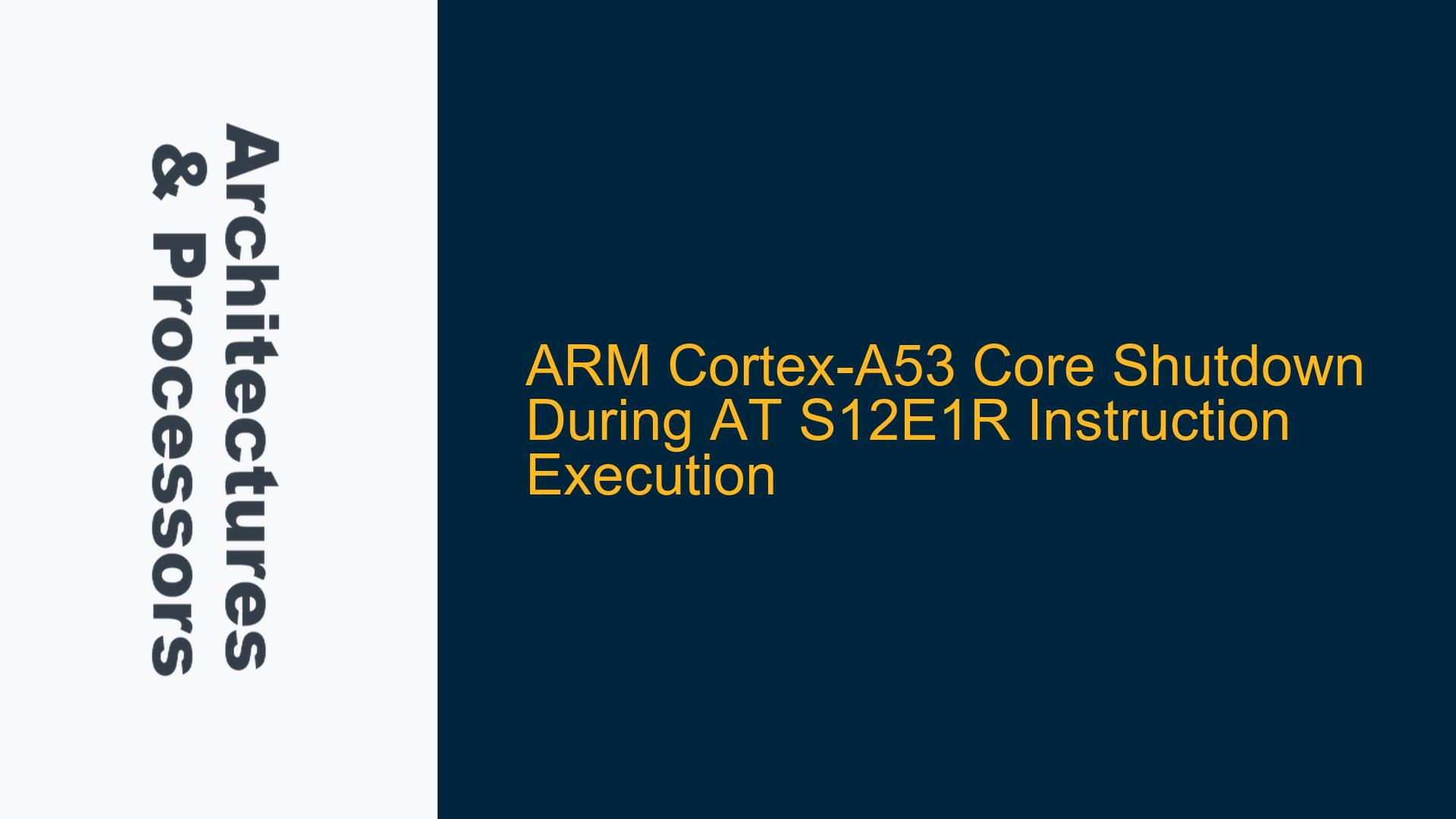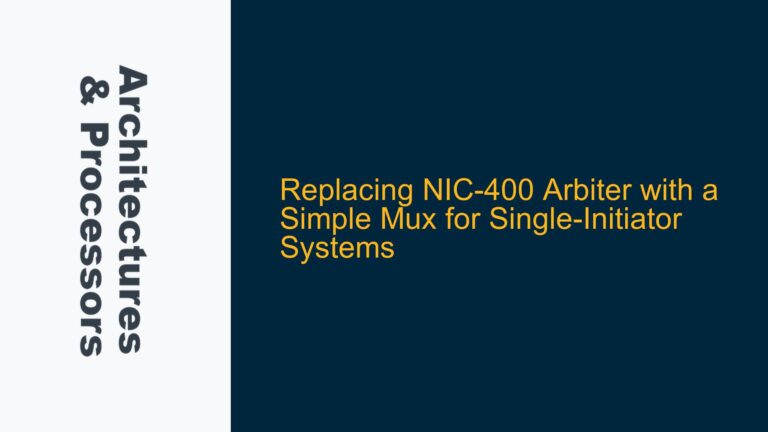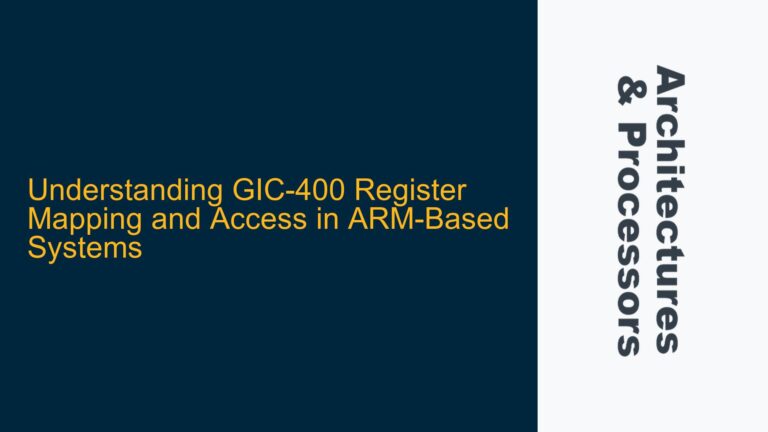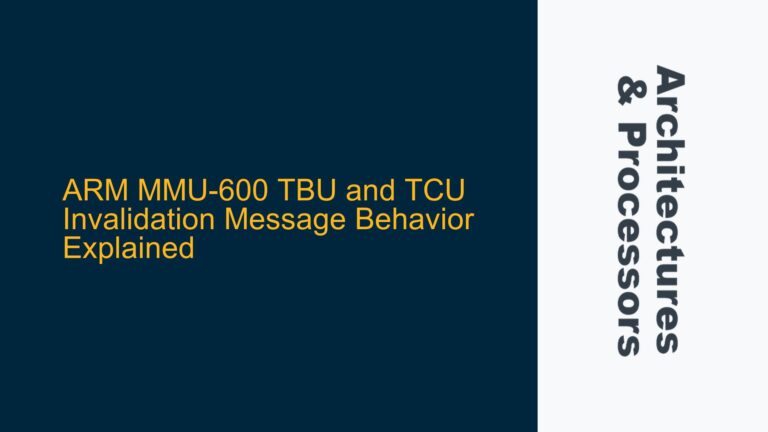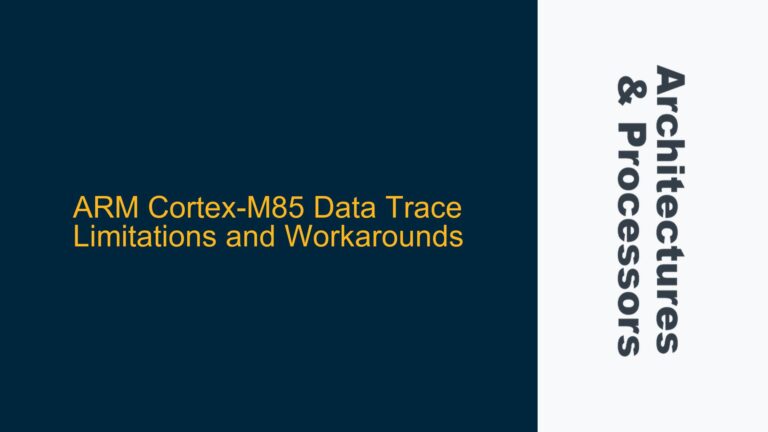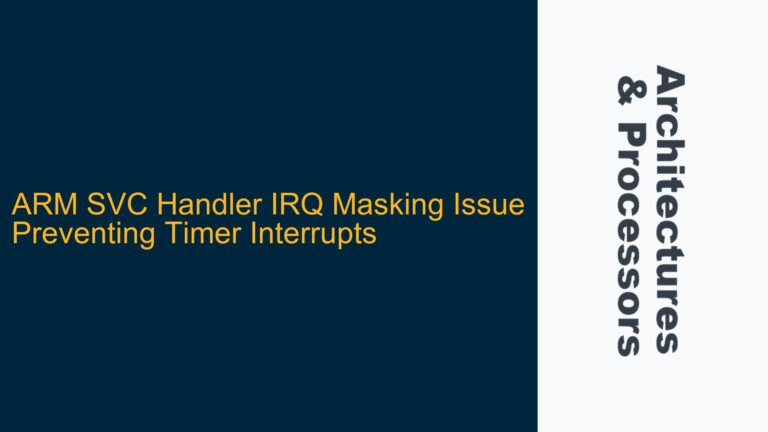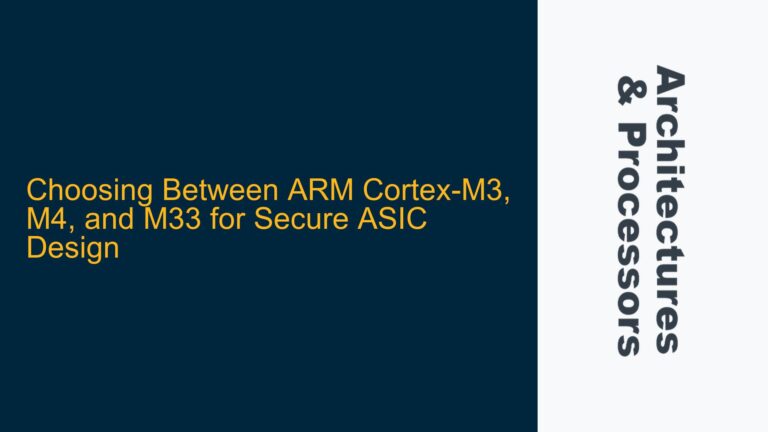ARM Cortex-A53 Core Shutdown During AT S12E1R Instruction Execution
The ARM Cortex-A53 processor is a widely used 64-bit core in embedded systems, known for its efficiency and performance. However, when implementing a bare-metal hypervisor, developers may encounter a critical issue where the core shuts down or becomes unresponsive during the execution of the AT S12E1R instruction. This instruction is used to perform address translation from a virtual address (VA) or intermediate physical address (IPA) to a physical address (PA) in a two-stage memory management unit (MMU) configuration. The shutdown occurs specifically when the hypervisor attempts to translate addresses at Exception Level 1 (EL1) using only Stage 2 translation, which is configured for the Guest OS.
The core shutdown manifests as the processor becoming unresponsive, requiring a hard reset to recover. This behavior is particularly problematic when transitioning from a bootloader like U-Boot to a custom boot implementation. The issue is not immediately apparent, as the same configuration works correctly under U-Boot, suggesting a subtle misconfiguration or timing issue in the custom boot implementation.
Memory System Request Failure Due to MMU Misconfiguration
The root cause of the core shutdown lies in the memory system’s inability to complete the address translation request initiated by the AT S12E1R instruction. This failure is often due to incorrect or incomplete configuration of the Stage 1 (S1) and Stage 2 (S2) MMU registers. The Cortex-A53 relies on these registers to correctly map virtual addresses to physical addresses, and any misconfiguration can lead to a hang or reset.
One critical aspect is the initialization of system registers, which are typically in an unknown state after reset. If these registers are not properly configured, the MMU may attempt to access invalid or unmapped memory regions, causing the core to hang. Additionally, the memory attributes assigned to the translated addresses must match the underlying hardware. For example, marking a region as Normal memory when it contains read-sensitive devices or devices with limited access sizes can lead to unpredictable behavior.
Another potential cause is the omission of necessary memory barriers or cache management operations. The Cortex-A53 employs a weakly ordered memory model, meaning that memory accesses can be reordered unless explicitly synchronized. If the hypervisor does not enforce the correct ordering of memory operations, the MMU may attempt to access memory before it is ready, leading to a core shutdown.
Comprehensive MMU Register Configuration and Debugging Techniques
To resolve the core shutdown issue, a systematic approach to MMU register configuration and debugging is required. The following steps outline the necessary actions to identify and fix the problem:
Step 1: Verify MMU Register Initialization
Ensure that all relevant MMU registers are correctly initialized before executing the AT S12E1R instruction. This includes the Translation Table Base Registers (TTBR0_EL1, TTBR1_EL1), Memory Attribute Indirection Registers (MAIR_EL1), and the Translation Control Register (TCR_EL1). Compare the register values with those used in the U-Boot configuration to identify any discrepancies.
Step 2: Validate Memory Mapping and Attributes
Confirm that the memory regions being translated are correctly mapped and have appropriate attributes. Use a debugger to inspect the page tables and ensure that the addresses being accessed are valid and mapped with the correct memory type (e.g., Normal, Device). Pay special attention to regions containing sensitive devices, as incorrect attributes can lead to access violations.
Step 3: Implement Memory Barriers and Cache Management
Insert Data Synchronization Barriers (DSB) and Instruction Synchronization Barriers (ISB) around the AT S12E1R instruction to ensure proper ordering of memory operations. Additionally, perform cache maintenance operations if necessary to ensure that the MMU has a consistent view of memory.
Step 4: Debugging with Lauterbach Debugger
Use a Lauterbach debugger to step through the code and monitor the core’s behavior during the execution of the AT S12E1R instruction. Set breakpoints before and after the instruction to capture the state of the core and memory system. If the core becomes unresponsive, inspect the debugger’s error messages and logs to identify the point of failure.
Step 5: Cross-Check with U-Boot Configuration
Compare the custom boot implementation with the U-Boot configuration to identify any differences in MMU setup or memory mapping. Pay particular attention to the sequence of register writes and the timing of MMU enablement. Replicate the U-Boot configuration in the custom boot implementation to isolate the cause of the issue.
Step 6: Analyze Core Reset Behavior
If the core resets after executing the AT S12E1R instruction, investigate the reset cause by inspecting the Reset Status Register (RST_STAT). This register provides information about the source of the reset, which can help identify whether the shutdown was triggered by a watchdog timer, memory access violation, or other hardware fault.
Step 7: Review Exception Handling
Ensure that the hypervisor has proper exception handling in place to catch and handle any faults generated during the address translation process. This includes configuring the Exception Syndrome Register (ESR_EL1) and implementing a fault handler to log and analyze any exceptions that occur.
Step 8: Test with Different Addresses
Test the AT S12E1R instruction with a range of virtual addresses to determine if the issue is specific to certain memory regions. This can help identify whether the problem is related to a particular memory mapping or a more general configuration issue.
Step 9: Consult ARM Documentation
Refer to the ARM Architecture Reference Manual for the Cortex-A53 to ensure that all MMU-related registers and instructions are being used correctly. Pay close attention to the sections on address translation, memory attributes, and synchronization requirements.
Step 10: Collaborate with ARM Support
If the issue persists, consider reaching out to ARM support for assistance. Provide them with detailed logs, register dumps, and a description of the steps taken to diagnose the problem. ARM’s support team can offer additional insights and guidance based on their expertise with the Cortex-A53 architecture.
By following these steps, developers can systematically identify and resolve the core shutdown issue during the execution of the AT S12E1R instruction. The key is to ensure that all MMU registers are correctly configured, memory mappings are valid, and proper synchronization and cache management techniques are employed. With careful debugging and validation, the Cortex-A53 can be made to reliably perform address translation in a bare-metal hypervisor environment.
